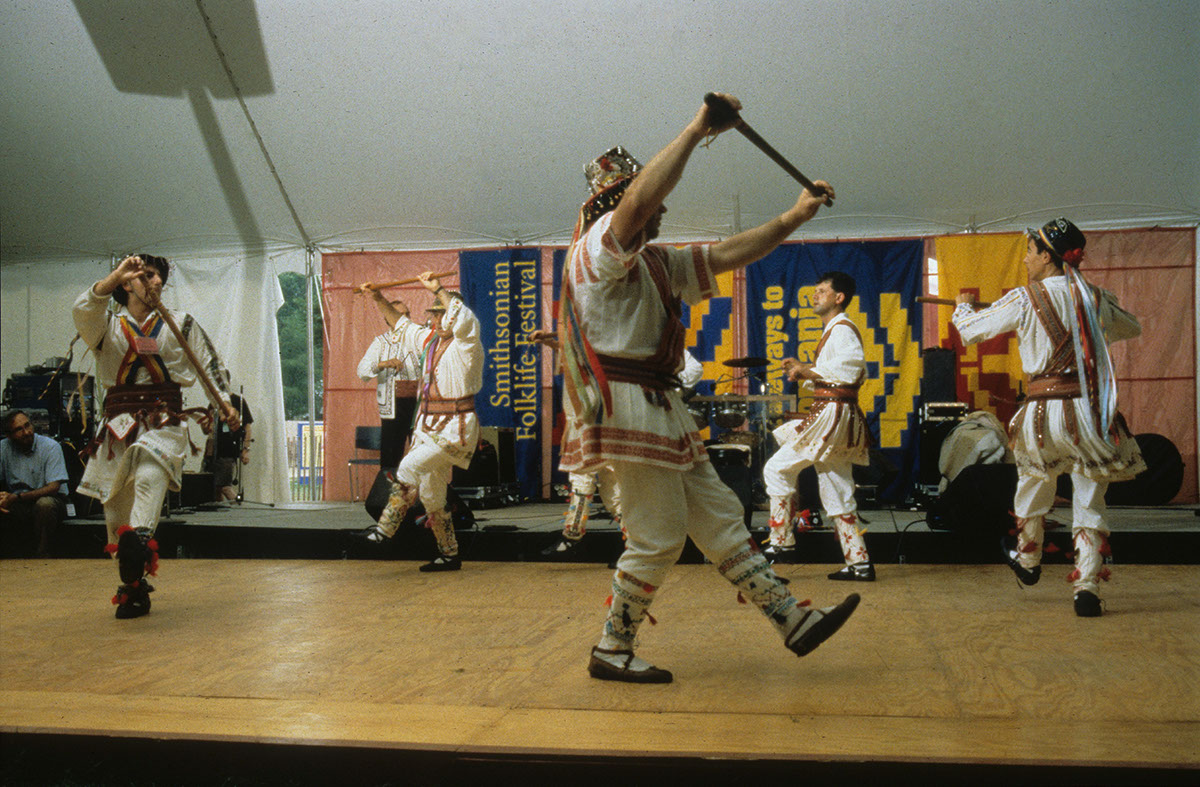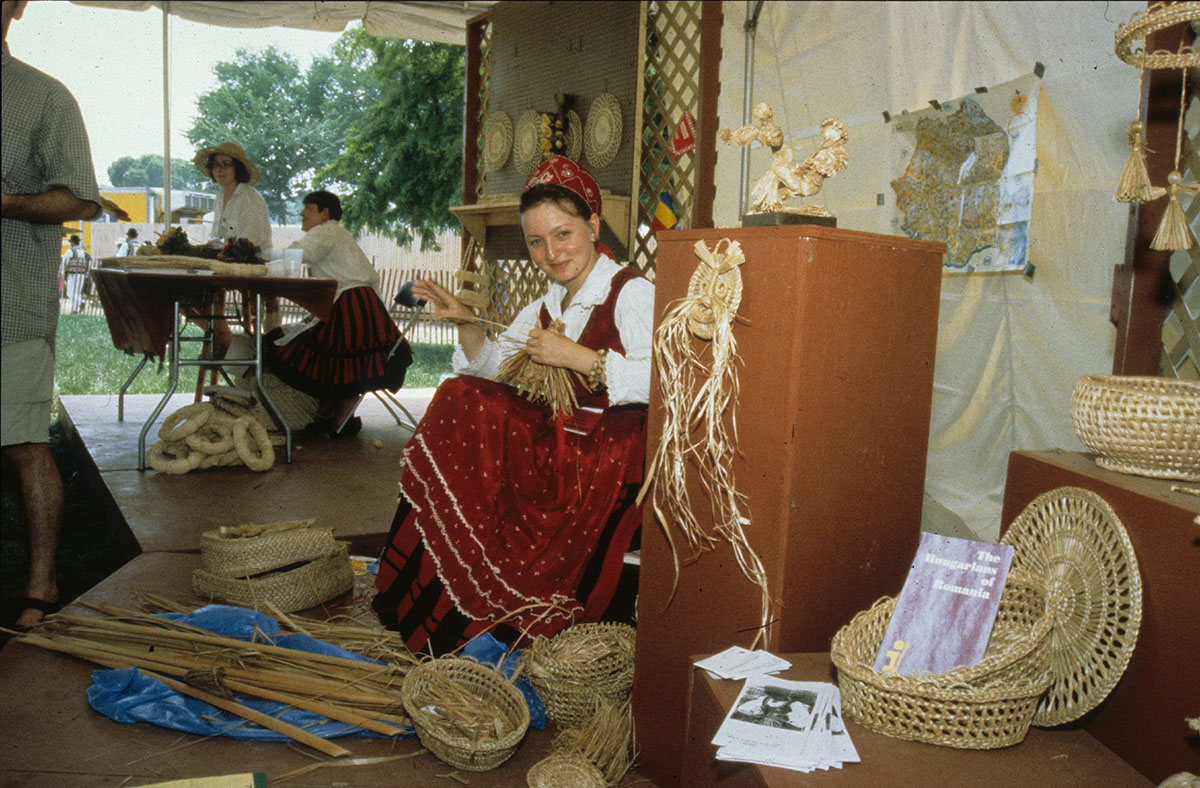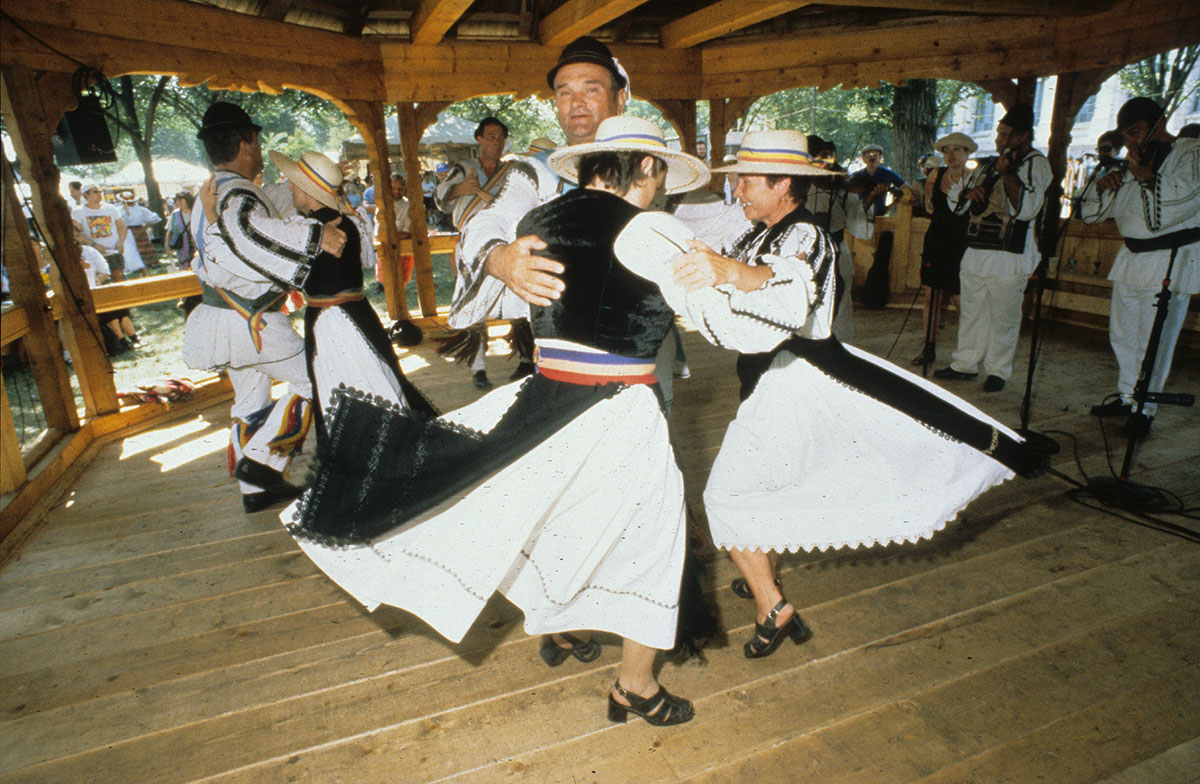Gateways to Romania







Romania consists of several distinct geographical regions, all of which have historically been more gateways than barriers to different cultures and peoples. To the west lie the hills and flatlands of Crişana and Banat, regions that open onto the immense Hungarian Plain even farther west. To the north are the hills and mountains of Maramureş and Bucovina, regions that have long been considered the cradle of Romanian folklore and traditional art. In the center is Transylvania, with its distinctive multicultural heritage influenced by Romanians, Hungarians, and Germans. To the south of the Carpathians are Oltenia and Muntenia, often grouped together under the name Wallachia, with their vast agricultural zones washed by the Danube. And situated between the Danube and the Black Sea is Dobrogea, where ancient fishing villages have given way to bustling tourist resorts.
At the time of the 1999 Festival, Romania's population was just under 23 million. While Romanians formed the majority population, major ethnic minorities included Hungarians (7%) and Roma or Gypsies (2%), as well as Germans, Ukrainians, Jews, Turks, Serbs, and other peoples. Diaspora communities were scattered throughout the world, especially in the United States, Canada, and Western Europe.
Modern Romanian culture is the product of centuries of interaction between local populations and successive waves of immigration to the region. Music, dance, folk art, and religious traditions share many commonalities with those of Hungarians, Slavs, Turks, and other Balkan peoples, even if the Romanian language is a romance language like French, Italian, or Spanish. Pre-Christian festivals associated with the changing of the seasons were combined with Saints' Days and other religious feasts after the coming of Christianity. Many of these traditions are preserved among the country's large rural population.
A people with a rich Latin heritage influenced by a myriad of other cultural traditions, the Romanians inhabit a land of diverse landscapes, where local customs, rituals, and ways of life have adapted to distinct physical environments: the woodlands of Transylvania and Maramureş, the plains of the west, the lowlands along the Danube River, and the urban cityscapes of Bucharest, Iaşi, and Cluj, ancient settlements that are nodal points in Romania's expanding array of private businesses, tourist outlets, and expatriate communities. The folk culture of the peasant had long been seen as the embodiment of Romanian identity, but at the close of the millennium, Romanian culture was more than ever a dynamic combination of both tradition and modernity--both vividly on display to festival visitors in Washington.
Colin Quigley was curator and Robert Dunlap Miclean was program coordinator. A curatorial committee included Corneliu Bucur, Nicolae Constantinescu, Mihai Dăncuş, Zamfir Dejeu, Irina Nicolau, Ioan Opriş, and Georgeta Roşu; Charles King was curatorial advisor.
The Romania program was produced with the Romanian Cultural Foundation and organized with the cooperation of the Office of the President of Romania, the Ministry of Foreign Affairs, the Ministry of Culture, and the U.S. Embassy in Romania, and with support from the government of Romania. Major sponsors were Coca-Cola and Connex. Contributors included the Romanian Development Bank, Chase Manhattan Bank, and the Timken Foundation. Donors included Nestor Nestor & Kingston Petersen, Cold Chain Impex S.R.L., Zero International Inc., and General Electric. Major in-kind support was provided by Tarom Airlines, Bates Centrade Saatchi & Saatchi Romania, and Romtrans.

